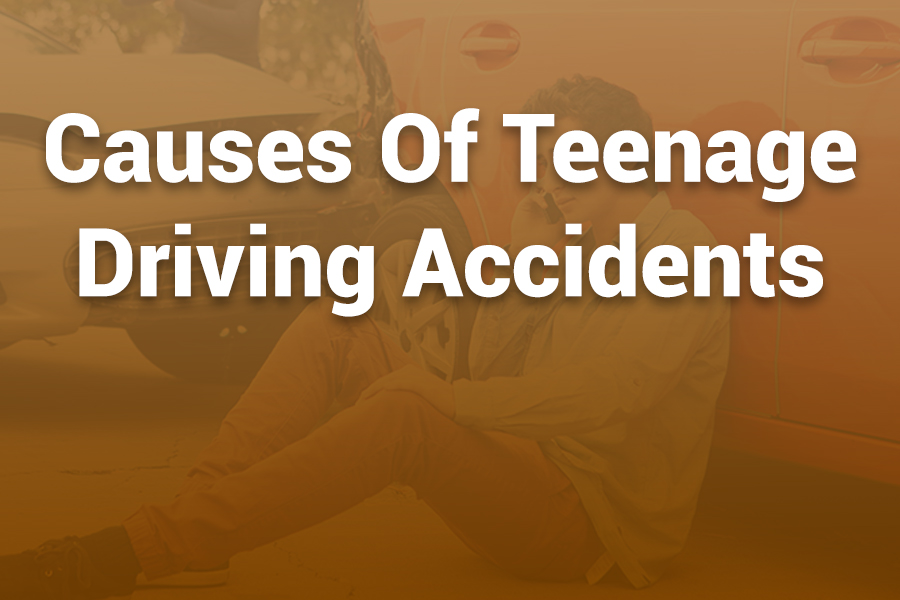Teenagers often look forward to driving as a symbol of independence and freedom. However, this milestone also comes with serious risks. Car accidents remain a leading cause of injury and death among teens, with many crashes linked to preventable behaviors and conditions.
Factors such as inexperience, peer pressure, distractions, and risky decision-making play significant roles. Understanding these causes helps parents, educators, and policymakers create safer roads for young drivers. In this article, you will learn about the major causes of teenage driving accidents, the latest statistics, and practical steps to reduce these risks.
Inexperience Behind the Wheel
One of the biggest causes of teenage driving accidents is lack of experience. Unlike seasoned drivers, teens often struggle with judging distances, anticipating hazards, and responding quickly in emergencies. Their ability to process multiple traffic conditions at once is still developing. Research shows that teens have higher crash rates during the first 18 months after getting a license. This period highlights the steep learning curve of driving.
Driving is not just about controlling a car; it involves predicting other drivers’ actions, understanding road conditions, and making fast decisions. Teens may underestimate how long it takes to stop a vehicle or how dangerous certain maneuvers can be. Inexperience increases the likelihood of rear-end collisions, left-turn crashes, and losing control in bad weather.
Distracted Driving
Distractions are a leading factor in teen accidents. Modern life offers countless interruptions, from smartphones to music players. Texting, browsing apps, or even holding conversations with passengers take focus away from the road. According to the CDC, teens are more likely than older drivers to engage in risky distracted driving behaviors.
Three types of distractions affect drivers:
- Visual: taking eyes off the road
- Manual: taking hands off the wheel
- Cognitive: taking the mind off driving
Teens often engage in all three at once, especially while texting. Even glancing at a phone for five seconds at highway speeds means driving blind for the length of a football field. Studies reveal that driver distraction contributes to nearly 10% of fatal crashes involving teens.
Peer Pressure and Passengers
Teenagers often drive with friends, and this can be both exciting and dangerous. Peer passengers increase the risk of reckless driving. With more teens in the car, distractions grow, and drivers may feel pressured to take risks. Some teens speed, race, or ignore traffic laws to impress friends.
Research indicates that crash risk doubles with one teen passenger and increases even more with three or more. Teenage male drivers, in particular, are more likely to engage in aggressive driving behaviors when friends are present. Passenger restrictions in graduated driver licensing programs exist for this reason, as they significantly reduce teen crash rates.
Speeding and Risky Behaviors
Speeding is one of the most common causes of teenage crashes. Teens often underestimate how dangerous speeding can be, especially on unfamiliar roads or in poor weather. In 2021, about one-third of teen driver fatalities involved speeding. Higher speeds reduce reaction time and increase the force of impact during a crash.
Beyond speeding, risky behaviors like tailgating, weaving between lanes, or attempting dangerous overtakes contribute to many accidents. Risk-taking is partly linked to adolescent brain development. The prefrontal cortex, which controls decision-making and impulse management, is not fully developed until the mid-20s. This makes teens more prone to impulsive actions behind the wheel.
Driving Under the Influence
Although underage drinking laws are strict, alcohol remains a factor in many teen crashes. Even small amounts of alcohol impair judgment and reaction times. According to recent CDC data, about 24% of teen drivers involved in fatal crashes had been drinking. Drug use, including cannabis, also plays a role, further reducing alertness and coordination.
Driving under the influence does not only put teen drivers at risk but also endangers passengers, pedestrians, and other motorists. Zero-tolerance laws for underage drinking and driving exist, but enforcement and education remain critical.
Nighttime Driving
Driving at night poses extra challenges for teens. Reduced visibility makes it harder to detect hazards, while fatigue affects alertness. Statistics show that teen drivers are more likely to be involved in fatal crashes at night, especially between 9 p.m. and midnight. The risk is even greater on weekends, when teens are more likely to drive late with friends.
Headlight glare, unfamiliar roads, and drowsiness all contribute to nighttime accidents. For this reason, many graduated licensing laws restrict teen driving after certain hours, aiming to reduce crash rates.
Failure to Wear Seatbelts
Seatbelts save lives, yet many teens neglect to use them. Studies show that about half of teens killed in crashes were not wearing seatbelts. Some teens underestimate the importance of seatbelts or believe they are uncomfortable. Others may simply forget when driving short distances.
Seatbelts reduce the risk of serious injury and death by about 50%. Encouraging consistent seatbelt use through parental monitoring and education campaigns remains essential.
Overconfidence and False Sense of Skill
Many teens quickly gain confidence after receiving a license. While confidence is important, overconfidence can lead to reckless decisions. Some teens believe they are skilled enough to handle speeding or aggressive maneuvers, even though they lack experience. This false sense of security often results in accidents.
Overconfidence may also cause teens to ignore traffic laws, take risks in bad weather, or underestimate the dangers of distraction. Drivers who believe accidents happen only to others are less likely to take safety precautions seriously.
Environmental and Road Conditions
Road conditions also play a role in teenage accidents. Teens often lack experience driving in rain, snow, or fog. Wet or icy roads require longer braking distances, which inexperienced drivers may fail to anticipate. Poorly lit roads, sharp curves, and unfamiliar routes increase the likelihood of crashes.
Teens may also misjudge how their car handles under different conditions. Hydroplaning, skidding, and loss of traction are more common among inexperienced drivers. Learning to adjust speed and increase following distance is key to preventing accidents.
Vehicle Type and Safety Features
The type of vehicle teens drive influences accident outcomes. Smaller, older cars without modern safety features put young drivers at greater risk. Families may purchase inexpensive used vehicles for teens, but these often lack airbags, electronic stability control, or advanced braking systems.
Larger vehicles with updated safety technology provide more protection in crashes. Programs encouraging parents to consider safety ratings when choosing vehicles for teens help reduce fatalities.
Fatigue and Drowsy Driving
Teenagers often juggle school, part-time jobs, extracurriculars, and social lives. As a result, many get insufficient sleep. Sleep deprivation significantly affects concentration and reaction times. Drowsy driving is comparable to driving under the influence of alcohol.
Studies show that teens who sleep less than eight hours per night face a higher risk of accidents. Early school start times, late-night study habits, and social activities contribute to chronic fatigue, making drowsy driving a serious concern.
Gender Differences in Risk
Crash statistics show gender differences in teen driving behavior. Male teenagers are more likely to engage in speeding, aggressive driving, and risky maneuvers. Female teenagers, while less prone to risky driving, still face risks linked to inexperience and distraction. Understanding these differences helps tailor safety education.
Parental Influence
Parents play a significant role in shaping teen driving habits. Teens often mirror parental driving behaviors, whether safe or unsafe. Parents who model responsible driving, enforce rules, and monitor teen driving reduce accident risks. In contrast, permissive or inattentive parenting may encourage risky driving.
Graduated driver licensing systems often encourage parental involvement. Setting boundaries, monitoring curfews, and riding along with teens help instill safe habits.
The Role of Graduated Licensing Programs
Graduated driver licensing (GDL) programs are proven to reduce teen crashes. These laws introduce driving privileges in stages, starting with supervised driving, followed by restricted driving, and finally full licensure. Restrictions may include limits on nighttime driving and passenger numbers.
States with strong GDL laws report fewer accidents among teens. These programs give young drivers more time to gain experience before facing higher-risk situations.
Technology and Solutions
New technology offers tools to monitor and improve teen driving. Apps and devices track speed, location, and phone use while driving. Some insurance companies provide discounts for families who use monitoring systems. Advanced driver-assistance systems (ADAS) in modern vehicles also reduce accident risks by warning of collisions and assisting with braking or lane changes.
Education campaigns, school programs, and community initiatives further help teens understand the risks of unsafe driving. Combining technology with strong laws and parental involvement creates a multi-layered approach to prevention.
Conclusion
Teenage driving accidents result from a combination of inexperience, distraction, risk-taking, and environmental challenges. Each factor adds layers of danger that make young drivers more vulnerable.
However, with education, parental involvement, and strong safety measures, many of these accidents can be prevented. By addressing the root causes and encouraging responsible habits, communities can protect teens and reduce tragedies on the road.









